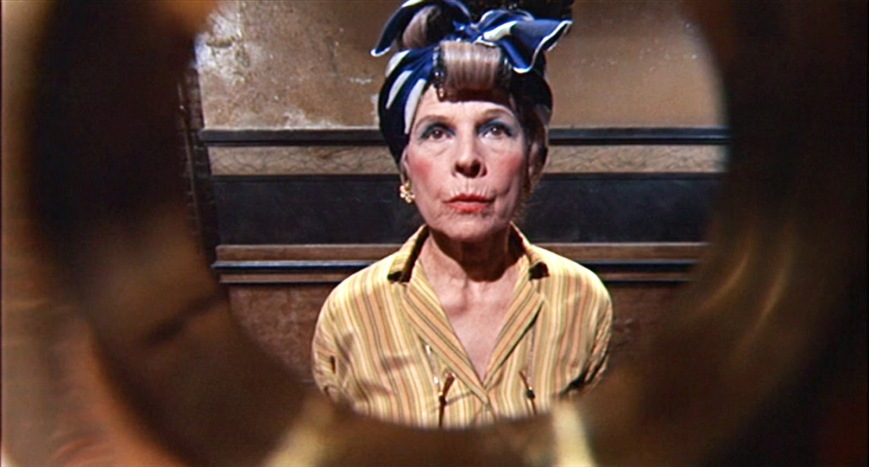
I thought I’d already seen ROSEMARY’S BABY, but soon realized that I’d only seen the last third or so. Huh.
Having recently caught a screening of Polanski’s earlier “woman trapped in an apartment with paranoia and bad dreams” film, REPULSION, at the Loft Cinema, I can see how each informs the other, but ROSEMARY’S BABY is a less forcefully claustrophobic flick. Less visceral, more measured. And funnier.
The most striking thing about ROSEMARY’S BABY (besides the horrible clownish makeup job on Mia Farrow’s Rosemary when she’s ill) is the unsettling way Polanksi and editors Sam O’Steen and Bob Wyman cut between scenes. Rather than rely on standard tropes (Dutch angles, sickly color palette, off-key music, etc.) to put the audience at un-ease, the filmmakers instead use scene transitions to jar the viewer.
How?
The bulk of the scenes transitions in the first 2/3 of the movie follow this formula: finish a scene with an overly abrupt cut (sometimes on sound) and immediately jump into a camera movement during the next scene. Don’t cut to an establishing or orienting shot. If cutting on sound between two scenes, don’t cut on similar sounds. Use wardrobe to signify a time change.
An example: there’s a scene where a young lady Rosemary has befriended has fallen out a window and splattered on the pavement below their apartment building. Rosemary and her husband (John Cassavetes, great in the role), amidst the police and crowd, talk to the older couple the young lady was living with. Rosemary and her husband leave the couple and enter the apartment courtyard. The cut happens while Rosemary and her husband are still walking away, but in frame, and while the older couple are in mid-motion consoling each other and while an off-screen police siren is starting up. The next scene starts with a camera already in motion roving over Rosemary and her husband in bed.
So what does this editing strategy accomplish?
It creates a “shock + motion” feeling. The abrupt cut disrupts the viewer’s flow and, by immediately going into a moving camera during the next scene, the viewer is already playing catch-up. It’s not quite whiplash, but there’s no real relief. This technique is particularly effective during Rosemary’s pregnancy when it seems like things are moving quickly beyond her control.
The effect is also low-key enough to signify things going awry behind the scenes in Rosemary’s life. Her husband hasn’t changed his self-centered and buoyant personality nor is he overtly hostile to her, but he’s allowed some really really really really horrible things happen to her without her knowing. Really really horrible.
Really? Really.
This strategy wouldn’t work as well without a counterpoint, though, and the filmmakers give you a nice fat traditional establishing shot early on in the film that satisfies this role. There’s a wide angle shot of Rosemary and her husband entering the courtyard of their new apartment building. It lingers on the fountain for a few seconds before they enter, then follows them as they walk through. Peaceful, normal, traditional.
It’s a simple shot, but stands out because of its traditional setup and leisurely pace. The filmmakers don’t cut to Rosemary and husband as they’re entering–it cuts to the wide shot early to give you breathing room before they come in. In the story, things haven’t started to go off the rails yet, so this setup makes sense emotionally. A calm before the quietly roiling storm.
In the spirit of ROSEMARY’S BABY, I’m going to abruptly cut to the next paragraph.
Come for the shocking horror elements (Satan rape, anyone?), stay for the moments of twisted comedy in the final scene.
** Trivia note: Rosemary’s husband, an actor, gets a big break by taking on a role when the original actor goes blind. At one point in the film, Rosemary telephones the blinded actor to ask him some questions. The voice on the line? An uncredited Tony Curtis.